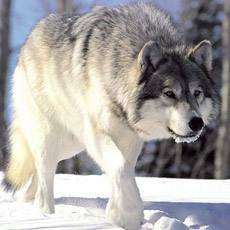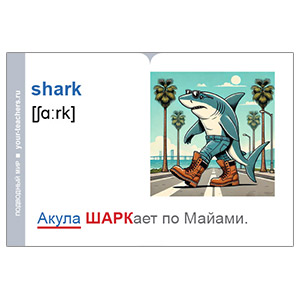Описане волка на английском языке
- Подробности
- 49380
На этой странице представлено краткое описание волка на английском языке. Двойной клик по слову откроет его перевод и озвучку. Ключевые слова можно закрепить в тренажёре в конце страницы. Работа со словами задействует моторную память и помогает лучше из запоминать. К каждому разделу добавлен аудиофайл в формате MP3 для более глубокого разбора и развития навыков аудирования.
ВОЛК

Vocabulary:
| № | Английский | Транскрипция | Русский |
|---|---|---|---|
| 1 | vulturous | [ˈvʌltʃərəs] | хи́щный |
| 2 | angry | [ˈæŋɡri] | злой |
| 3 | wild | [waɪld] | дикий |
| 4 | howling | [ˈhaʊlɪŋ] | вою́щий |
| 5 | savage | [ˈsævɪdʒ] | свире́пый |
| 6 | hungry | [ˈhʌŋɡri] | голо́дный |
| 7 | dangerous | [ˈdeɪndʒərəs] | опа́сный |
| 8 | sharp-toothed | [ˌʃɑːp ˈtuːðd] | зуба́стый |
ПОТРЕНИРУЙТЕ СЛОВА
Описание волка
Look at the picture. You can see a wolf sitting on its 4 paws in the snow. This wolf looks like a dog. Its fur is thick. The color of its fur is grey and white. It has 4 legs and strong paws. Its ears are pricked. It has two eyes and a black nose. Its bushy tail is behind its body. It looks cute, but it’s dangerous. Wolves are predatory animals. They eat other animals.
LISTEN TO THE TEXT
15 Интересных фактов о волке
The gray wolf (Canis lupus) is a species of carnivorous mammals from the Canidae family. It is also known as the timber wolf, or western wolf. The wolf resembles a large, sharp-eared dog and is the ancestor of the domestic dog. Its legs are strong and the paws are more elongated than a dog’s. The head is broad-browed and the muzzle is relatively wide. The tail is thick and is usually carried low. The fur consists of two layers. The first layer is rigid hair that resists water and dirt. The second layer is a warm undercoat. Depending on the habitat, wolves have different colors. The body length can reach 160 cm, and the tail up to 52 cm. Body weight can reach up to 80 kg. Wolves hunt in packs. During the chase of their prey, they can reach a speed of up to 65 km/h. Groups coordinate with voice alerts. Wolves communicate by different kinds of howling. A wolf can detect prey at a distance of up to 3 kilometers. Its sense of smell is over 100 times better than that of humans. In the tundra they hunt reindeer; in forests they hunt deer and roe deer; in steppes and deserts mainly antelopes. Wolves rarely attack people, although some cases have been documented.
LISTEN TO THE TEXT








 Как правильно изучать английский язык по карточкам (статьи)
Как правильно изучать английский язык по карточкам (статьи)